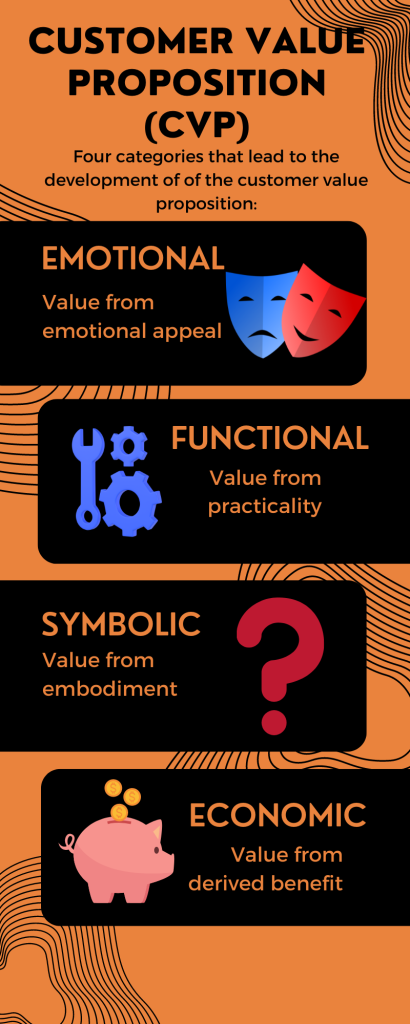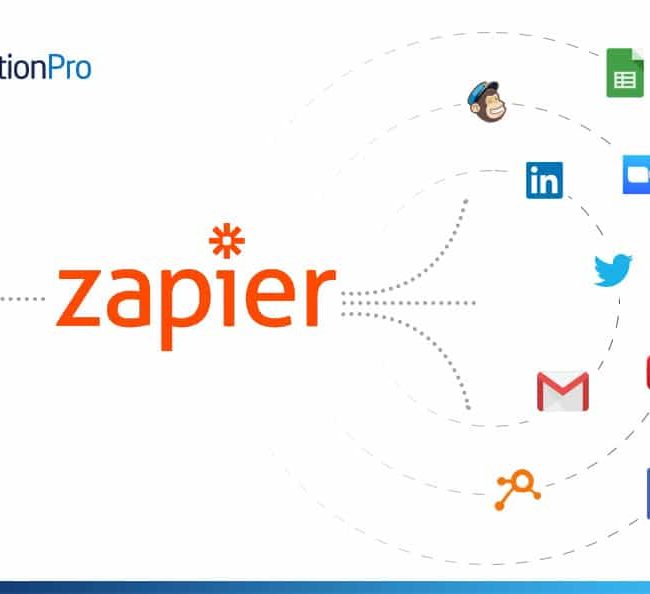
Customer value creation – what and how?
Esseen tyyppi: Akateeminen essee / 3 esseepistettä.
A few weeks ago, we had an introductory paja on the topic of marketing. Whilst diving into the subject, I learned very quickly that marketing really is not as simple as it may seem to consumers – there’s a lot that is being thought about when companies and organizations produce marketing campaigns. However, the goal of marketing itself is quite straightforward: to express and communicate a unique value proposition to potential customers. Marketing strives to create value for customers in order to capture value from customers in return (Kotler, Philip et al. 2020, 6).
One thing the professionals behind big marketing campaigns are facing during the designing process is the concept of how to create value for customers. Depending on the segmentation of target groups and the product/service being marketed there are different ways to approach the process of value creation. Four classic ways that marketing approaches value creation are through emotional, symbolic, functional, and economic value creation, which I will introduce in this essay.

Figure 1 – Customer Value Proposition (Mulder, P. 2012)
Emotional marketing
Emotional marketing refers to marketing and advertising that primarily utilizes emotional appeals to create value for old and new potential customers. Emotions have a lot to do with creating loyal, enthusiastic customers. It is proven by studies that powerful memories come from intense emotional experiences. Marketing efforts that latch onto those memories access intense emotions which then guide the customer’s behavior. According to experts, marketing with emotional content is twice as successful as marketing using informative content. (Crowdspring.com, 2022)
Emotions are more persuasive as long as they are leveraged to work in the marketer’s favor. The key to leveraging the right emotions to boost sales is in choosing the right ones that work with the brand’s identity. There’s a wide range of emotions that different marketing campaigns may utilize to capture their audiences, which can generally be divided into two groups: positive and negative ones.
Different types of emotional appeals (Crowdspring.com, 2022):
Self-esteem
- When advertisements tap into the customers’ self-esteem, the customers desire to feel good about themselves. These positive emotions in turn create positive impressions of the marketed product/service.
Authority
- People tend to give in to the power of authority because the words of a person in an authoritarian position carry weight. When we hear statements of experts, we hold them credible, which then makes them have a massive impact on our behavior. “9 out of 10 dentists recommended this product” is one common phrase used in the oral care industry, for example.
Happiness
- Happy feelings are powerful at connecting with customers because they create positive and pleasurable associations with the brand. When a person sees an advertisement that makes them joyful, for example, they create a mental link to the product/service. This increases the chance of committing to a purchase decision.
A common thought is that positive emotions are a better choice in marketing compared to negative ones, but that’s not always the case. They can be equally persuasive!
Sadness
- Sadness is a very strong feeling. It’s that type of emotion that really persuades people to act. A common method of utilizing this emotion is showing consumers a sad and difficult problem, then providing them with a solution that enables the consumers to move from sadness to empowerment.
Fear
- Another emotion that can be leveraged to motivate change is fear. This emotion is impactful, but also quite tricky: fear appeals that are too intense or harshly presented can sometimes backfire and be viewed as unpleasant and upsetting. But, if leveraged optimally, fear can create big changes in motivation. For example, fear is usually used as a method of impacting the toxic habit of smokers. By showing brutal photos of cancerous lungs to customers purchasing cigarette packs, the campaigners seek to make the smokers want to escape their toxic habits.
Anger
- Anger is a great method used to create confrontation and highlight the value proposition of the marketed product/service. It encourages the customer to try out your brand instead of another. For example, Dollar Shave Club tapped into a common problem by illustrating the frustration that comes with buying commercial brand razors. Then they offered their pain-free solution, which the frustrated customers were attracted to.
Functional marketing
Whereas emotional marketing appeals to the heart of the customer, functional marketing tends to appeal to the brain. Functional marketing is a marketing technique that develops a brand based on the functionality or the features of a product, instead of its emotional appeal (AMPLIFY XL, 2021).
Functional marketing appeals to our intellect and works best with customers who make carefully thought-out purchase decisions rather than on emotion or gut. Using functional marketing as a method to create value for your customers is extremely handy when you’re selling a product that’s value is embedded in its practicality. So, you wouldn’t use functional marketing in a campaign designed to gather donations for children in Ukraine, like you would with emotional marketing. However, you should use functional marketing if you’re launching a new technological innovation that offers the best features on the market.
Usually, products/services that emphasize functional value focus on convenience, have problem-solving abilities and are easy to use and more comprehensive than other products/services. Apple is a good example of a company that utilizes functional marketing to create value for its customers. In their marketing campaigns, you often see them praising their high-quality products, easy-to-use operating systems, and unique designs. Bringing out these features enables them to stand out from other technology giants, like Microsoft and Samsung, who, in turn, also make use of functional marketing in bringing out the functions that they think will give them an edge. Ultimately, it is up to the customer to decide what functionalities fit their needs and wants the best.
Symbolic marketing
Symbolic marketing can be defined as a form of value creation that gains its effectiveness from the symbolic value of the marketed product/service. The symbolic value of the object, itself, refers to the semantic and cultural universe linked to it, which allows consumers to express their identity and social membership. An example of this phenomenon is designer clothing: their value does not always stem from expensive raw materials or labor, but the deeper meaning a customer grants it – like a sense of status. “Goods are symbolic as opposed to their supposed functionality; they are symbolic because they represent embodied symbols. The value of a good, therefore, is not only connected to its tangible aspects, that is, its structural characteristics and usefulness, but it is dematerialized and becomes a sign, symbol, and communication.” (Michele Bonazzi, 2015)
A commodity tells a story and at the same time becomes a form of identity expression, with a code and a language that is reflected in the system of meanings attributed to it. In most cases, it’s in the brand’s best interest to be perceived as this form of identity expression, because it creates the customer tremendous personal value. This then helps in forming a loyal relationship between the two. When the customer adapts a product/brand to be an object to mirror his/her persona, it quickly becomes a necessity.
Economic marketing
Economic marketing can be defined as a value-creation process that strives to make one good’s value more appealing than that of another. Economic value is formed by the perception of the benefit the customer derives from an economic good. It is often based on the customer’s willingness to pay for a good, typically measured in units of currency (Carolina Banton, 2020). This willingness to pay – economic value – consists of reference value and differentiation value (Maximilian Claessens, 2018).
This means, that the value consumers attach to a product depends firstly on the available alternatives and their values (reference value) and secondly on the aspects that differentiate the given product from the other alternatives (differentiation value). Differentiation value comes in two forms: monetary, which represents total savings or income increases accrued by the purchase of the good; and psychological, which refers to the ways a good creates innate satisfaction to the customer (Classens, M. 2018).

Figure 2 – Role of Economic Value in Pricing – Value-Based Pricing (Maximilian Claessens, 2018)
Conclusion:
The importance of the actual monetary value of a product can not be underestimated. After all, each consumer has a certain amount of money to spend on goods, and one’s own budget is the first thing that comes to mind when making a purchase decision. However, as noted both in Figure 1 and Figure 2, the end value a customer will pay considers both the tangible and intangible aspects of the good. The former is based on the product’s functionality, which can be highlighted with functional marketing. The latter is based on consumer sentiment toward product ownership, which can be affected by emotional and symbolic marketing.
List of sources:
Amplifyxl.com. Functional marketing – what is it and when do you use it? N.d. Read on 6.12.2022. https://amplifyxl.com/what-is-functional-marketing/#:~:text=Functional%20Marketing%20is%20a%20marketing%20technique%20in%20which,of%20a%20product%20rather%20than%20its%20emotional%20appeal.
Banton, C. 2020. Economic Value: Definition, Examples, Ways To Estimate. Investopedia.com. Read on 5.12.2022. https://www.investopedia.com/terms/e/economic-value.asp
Bonazzi, M. 2015. Symbolic Value. Wiley Online Libary. Read on 5.12.2022. Requires access rights. https://onlinelibrary.wiley.com/doi/full/10.1002/9781118989463.wbeccs225
Claessens, M. 2018. Economic Value Estimation – How To Estimate Economic Value. Marketing-Insider. Read on 6.12.2022. https://marketing-insider.eu/economic-value-estimation/
Crowdspring.com. The definition of emotional marketing and how to use it. N.d. Read on 6.12.2022. https://www.crowdspring.com/marketing-psychology/emotional-marketing/
Mulder, P. 2012. Customer Value Proposition (CVP). Read on 4.12.2022. https://www.toolshero.com/marketing/customer-value-proposition-cvp/#:~:text=Symbolic%20value%20The%20customer%20attaches%20value%20to%20the,responsibility%20or%20may%20be%20derived%20from%20a%20brand.



